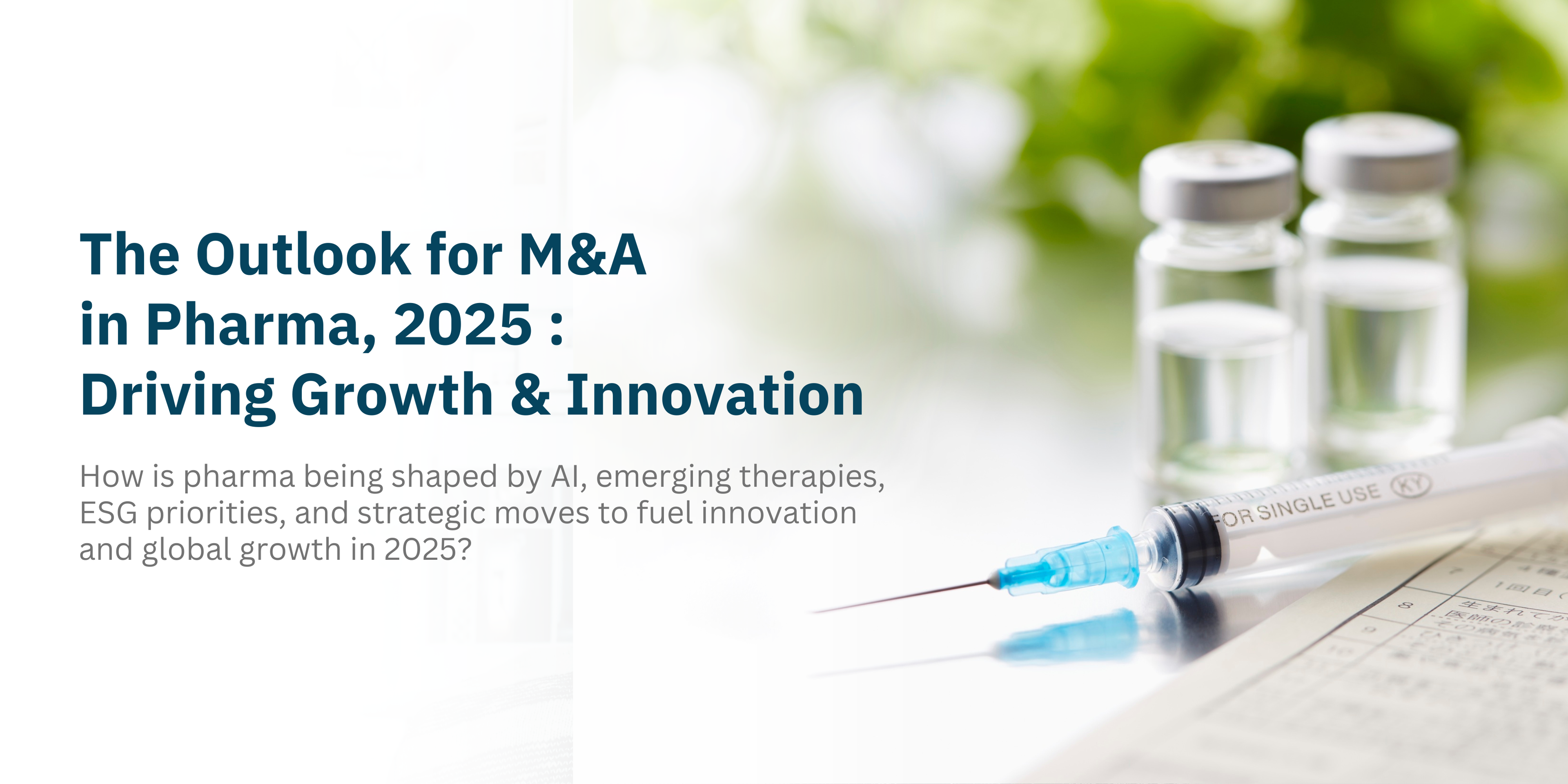The pharmaceutical and biotech industries are undergoing a significant transformation in 2025. From ground-breaking advances in gene therapy to the increasing role of AI in drug discovery, mergers and acquisitions (M&A) are playing a crucial role in shaping the future of healthcare.
As companies navigate patent cliffs, target emerging markets, and embed ESG priorities into their strategies, they must also address challenges such as regulatory scrutiny and economic volatility.
This article explores the key drivers, emerging trends, and challenges defining the pharma M&A landscape in 2025.
Key Drivers of Pharma M&A in 2025
1) Patent Expirations & Pipeline Challenges
- Impact of Patent Cliffs: Major blockbuster drug patents, particularly in oncology and immunology, are expiring, pushing companies to seek new revenue streams.
- Acquisition of Late-Stage Assets: Pharma giants are acquiring biotech firms with mature pipelines to offset revenue losses.
- Focus on CNS Disorders & Rare Diseases: High-growth areas with expedited regulatory pathways and extended market exclusivity are attracting investments.
- Fierce Competition: Intense bidding wars for high-value biotech targets are expected as companies race to secure future revenue sources.
2) Emerging Therapeutic Areas Driving M&A
- Gene Therapy: The rise of curative solutions for genetic disorders is fueling acquisition activity.
- RNA Therapeutics: The success of mRNA vaccines is expanding its potential for infectious diseases and cancer treatments.
- Precision Oncology: Technologies such as CAR-T cell therapies and antibody-drug conjugates (ADCs) are driving consolidation.
- Investment Outlook: Companies investing in personalized medicine are future-proofing their portfolios for long-term success.
3) AI Revolution in Drug Discovery
- Accelerated Drug Development: AI is optimizing drug target identification and clinical trial designs, reducing development timelines.
- Cost Reduction: AI-driven efficiencies lower R&D expenditures and financial risks.
- Acquisition of AI Startups: Companies are acquiring AI-driven firms to enhance in-house capabilities and gain a competitive edge.
- Market Impact: Organizations integrating AI into their processes will outpace competitors in innovation and speed.
4) Expansion into Emerging Markets
- Asia-Pacific Growth: Countries like China and India are seeing increased healthcare investments and regulatory incentives.
- Simplified Approvals: Favorable policies, including tax benefits, are attracting global pharmaceutical players.
- Strategic Partnerships: M&A deals increasingly focus on local players to gain market foothold and accelerate expansion.
- Beyond Manufacturing: Emerging markets are becoming hubs for pharmaceutical innovation and research.
5) Sustainability & ESG Integration in M&A
- ESG-Driven Strategies: Companies are incorporating sustainability, carbon reduction, and circular economy initiatives into M&A decisions.
- Public Health Expansion: Expanding access to underserved markets aligns profitability with purpose.
- Investor Demand: ESG metrics are now a critical factor for shareholder confidence and long-term valuation.
- Competitive Advantage: Companies integrating ESG principles into their M&A strategy are enhancing their brand equity and trust.
Sectors to Watch in 2025
- Oncology: Leading the M&A space with continued innovation in immunotherapy, ADCs, and targeted therapies.
- Rare Diseases: High-growth potential due to high unmet medical needs and favorable regulatory incentives.
- Metabolic Health: Surge in demand for obesity treatments, including GLP-1 receptor agonists.
- Neurology: Breakthroughs in Alzheimer’s, Parkinson’s, and rare neurological disorders are gaining momentum.
- Digital Health: AI-powered platforms, wearable technology, and digital therapeutics are redefining patient care.
Emerging Trends in Pharma M&A
- Mid-Cap Biotech Takeovers: Pharma companies are balancing risk by acquiring mid-sized biotech firms with promising pipelines.
- Programmatic M&A: A shift toward smaller, frequent acquisitions to minimize risk while accumulating strategic value.
- Licensing & Partnerships: More companies are entering collaborative deals to share costs and expertise rather than pursuing full acquisitions.
- Tech-Bio Convergence: Increasing M&A activity between biopharma firms and big tech companies to drive healthcare innovation.
Challenges in Pharma M&A
- Regulatory Scrutiny: Heightened oversight in high-cost sectors such as oncology and specialty pharmaceuticals.
- Economic Uncertainty: Companies are leveraging creative financing strategies such as earnouts and equity swaps to mitigate volatility.
- Integration Risks: The success of acquisitions depends on effective cultural and operational integration.
Key Takeaways
- Innovation is Key: AI, personalized medicine, and digital health are reshaping the pharmaceutical M&A landscape.
- Strategic Focus: Companies are balancing high-growth opportunities with risk management through targeted acquisitions and partnerships.
- Global Expansion & ESG: Emerging markets and ESG initiatives are becoming central to sustainable and strategic growth.
Final Thoughts
The pharma M&A landscape in 2025 reflects a strategic shift toward innovation, resilience, and collaboration. Companies that align with these trends and opportunities will lead the next wave of growth in the industry.






